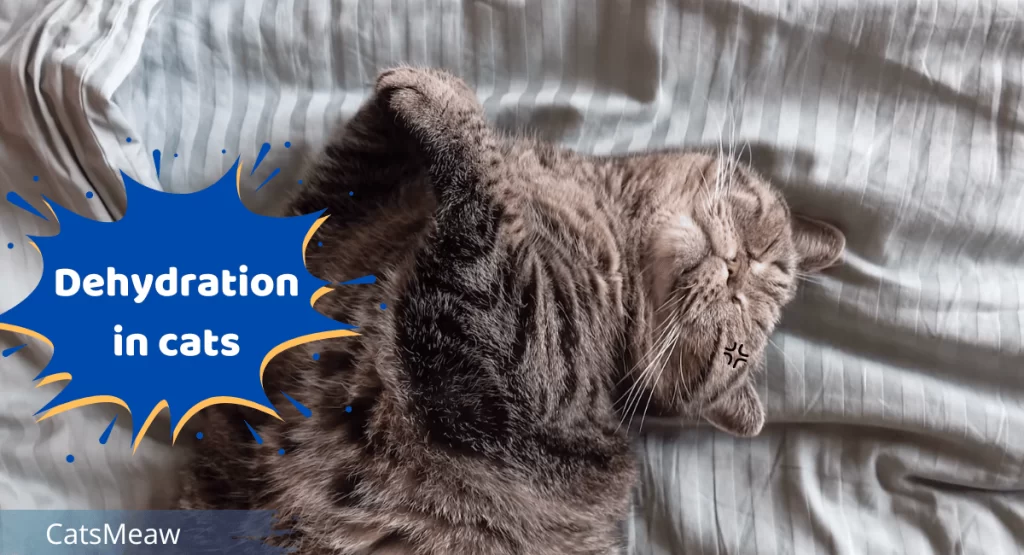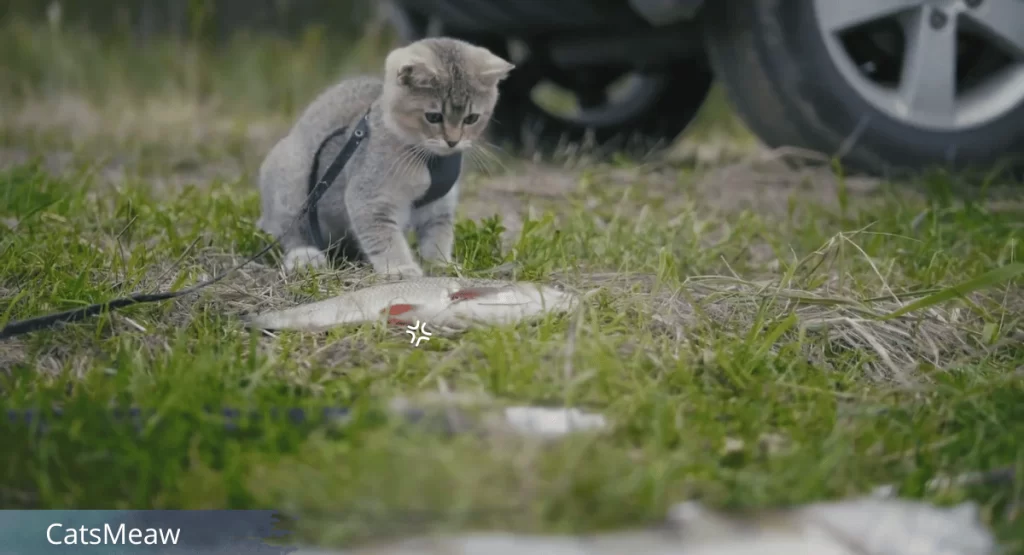If you love your cat then it is vital to ensure that your feline friend is always well-hydrated. Dehydration in cats can lead to serious health issues in cats, so it’s crucial to recognize the signs and take appropriate action. In this detailed article, we will explore the importance of hydration for cats, the signs of cat dehydration, the main causes, how to tell if your cat is dehydrated, steps to rehydrate your cat at home, when to seek veterinary help, preventing cat dehydration, common myths about cat hydration, and the recommended water intake for cats.

Table of Contents
Importance of Hydration for Cats
Water is essential for the overall well being of your cat’s body. It aids in digestion, temperature regulation, circulation, and the elimination of waste. Cats have a low thirst drive compared to other animals, which makes it even more important to encourage regular hydration. Dehydration in cats can lead to serious health problems such as urinary tract issues, kidney problems, and organ failure. Ensuring your cat has access to fresh water at all times is essential to their health and longevity.
Signs of Dehydration in Cats
Recognizing the signs of dehydration in your cat is important for early intervention. Here are common signs to look out for:
- Lethargy: A dehydrated cat may appear tired, weak, and less active than usual.
- Loss of Appetite: Cats that are dehydrated may show a decreased interest in food or refuse to eat altogether.
- Dry Gums and Mouth: Check your cat’s gums and mouth. If they appear dry or sticky to the touch, it may indicate dehydration.
- Sunken Eyes: Dehydration in cats can cause the eyes to appear sunken or dull.
- Poor Skin Elasticity: Gently pinch the skin on the back of your cat’s neck. If it takes more time than usual to return to its original position, then it could be almost a sign of dehydration.
Causes of Dehydration in Cats
Understanding the causes of dehydration in cats can help you prevent it from occurring. Some common causes include:
- Inadequate Water Intake: If your cat isn’t drinking enough water, dehydration can occur. This may be due to factors such as stress, illness, or a dislike for the water bowl’s location.
- Diarrhea or Vomiting: Cats with diarrhea or vomiting can quickly become dehydrated. These conditions can lead to a loss of fluids and electrolytes.
- Urinary Tract Issues: Cats with urinary tract infections or blockages may avoid drinking water due to the associated pain. This can lead to cat dehydration.
- Hot Weather: Cats can become dehydrated more easily during hot weather, especially if they don’t have access to shade and fresh water.
Our pick: The Best Cat Fountains & Bowls
How to Tell if Your Cat is Dehydrated
To check if your cat is dehydrated, you can perform a simple skin elasticity test. Gently lift the skin on the back of your cat’s neck and let it go. If the skin takes longer than usual to return to its original position, your cat may be dehydrated.
Another way to assess hydration levels is by examining your cat’s gums. Moist, pink gums indicate proper hydration, while dry or pale gums may be a sign of dehydration in cats. If you suspect your cat is dehydrated, it’s important to take action promptly.
Steps to Rehydrate Your Cat at Home
If you notice signs of dehydration in your cat, there are steps you can take at home to help rehydrate them:
- Offer Fresh Water: Ensure your cat has access to clean and fresh water at all times. Consider using a water fountain or placing multiple water bowls around your home to encourage drinking.
- Wet Food: If your cat typically eats dry food, try offering wet food as it contains a higher water content.
- Add Water to Food: If your cat is reluctant to eat wet food, try adding water to their dry food to increase their water intake.
- Syringe Feeding: In severe cases of dehydration in cats, you may need to syringe-feed your cat water. Consult your veterinarian for guidance on the appropriate amount and technique.
- Encourage Drinking: Some cats prefer running water. Consider using a cat water fountain or dripping water from a faucet to entice your cat to drink.

When to Seek Veterinary Help for Cat Dehydration
While mild cases of dehydration in cats can often be resolved at home, it’s crucial to know when to seek veterinary help. You should contact your veterinarian if:
- Severe Dehydration: If your cat is severely dehydrated or shows no improvement after trying to rehydrate them at home, immediate veterinary attention is necessary.
- Persistent Vomiting or Diarrhea: If your cat has been vomiting or experiencing diarrhea for an extended period, they may require medical intervention to prevent further dehydration in cats.
- Behavioral Changes: If your cat is displaying unusual behavior, such as excessive lethargy, disorientation, or a sudden change in appetite, it’s important to consult your veterinarian as it may be a sign of underlying health issues.
Related: The 10 Most Common Cat Diseases
Preventing Dehydration in Cats
Prevention is the main key when talking about dehydration in cats. Here are some tips to help ensure your cat stays adequately hydrated:
- Multiple Water Sources: Place water bowls in various locations throughout your home to make it easily accessible for your cat.
- Clean Water Bowls: Regularly clean your cat’s water bowls to ensure they are free from dirt, debris, and bacteria.
- Water Fountain: Consider investing in a cat water fountain to provide a continuous flow of fresh water, which may encourage your cat to drink more.
- Moist Food: Include wet food in your cat’s diet to increase their overall water intake.
- Regular Veterinary Check-ups: Regular visits to the veterinarian will help identify any underlying health problems that may contribute to cat dehydration.
Common Myths About Cat Hydration
There are several common misconceptions about cat hydration. Let’s debunk some of these myths:
- Cats Don’t Need Much Water: While cats have lower water requirements compared to dogs, they still require an adequate amount of water for their overall health.
- Cats Get Enough Water from Their Food: While wet food does contribute to a cat’s water intake, it’s not sufficient on its own. Cats must always have access to water.
- Cats Will Drink When They’re Thirsty: Cats have a lower thirst drive, so they may not drink enough water even when they’re dehydrated. It’s essential to encourage regular drinking.
- Cats Can Survive on a Dry Food Diet Alone: Dry food diets may not provide adequate hydration, leading to an increased risk of dehydration in cats and urinary tract issues.
- Cats Don’t Like Water: While it’s true that some cats may not be fond of water, there are ways to encourage them to drink more, such as using water fountains or offering running water.
Recommended Water Intake for Cats
The recommended water intake for cats can vary depending on factors such as age, weight, and overall health. As a general guideline, cats should consume approximately 60-80 milliliters of water per kilogram of body weight per day. However, it’s important to consult with your veterinarian to determine the specific needs of your cat.
Conclusion
Ensuring your cat is adequately hydrated is vital for their overall well-being. By recognizing the signs of dehydration in cats, taking appropriate measures to rehydrate your cat at home, and seeking veterinary help when necessary, you can help prevent dehydration-related health issues. Remember to provide clean and fresh water, offer wet food, and create an environment that encourages regular drinking. By following these guidelines and debunking common myths, you can keep your feline friend happy, healthy, and hydrated for years to come.
